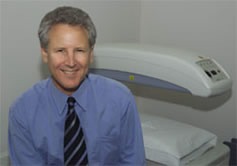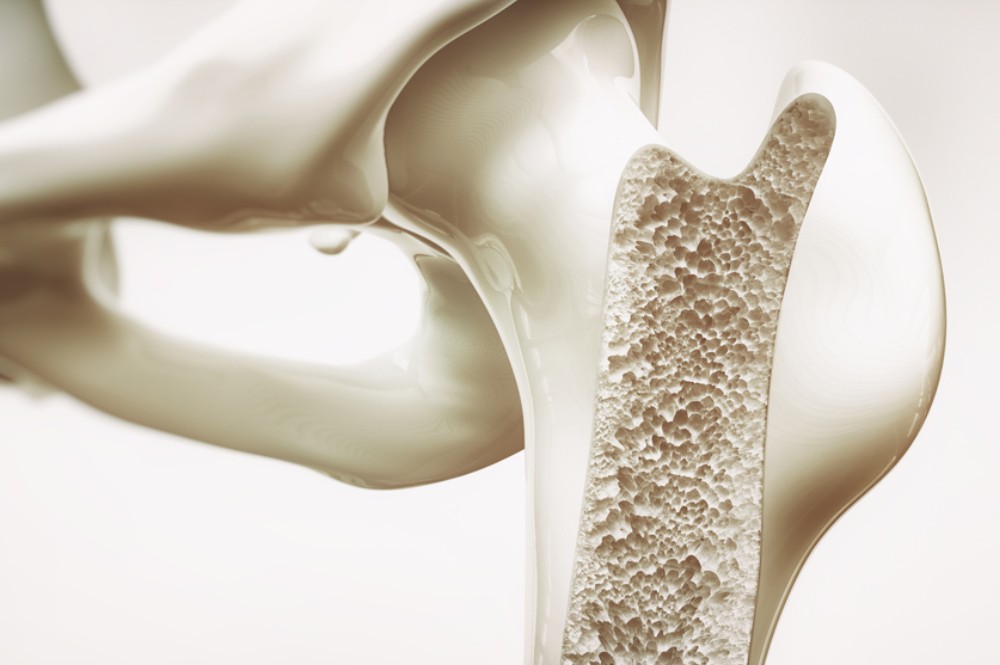Osteoporosis is a skeletal disease, marked by low bone mass and microarchictectural deterioration that leads to an increased susceptibility to fractures. Fractures are the single most important clinical consequence of osteoporosis and represent a major health problem in the elderly. Low bone mass, skeletal fragility and propensity to fall are the primary determinants of fracture risk in older persons. Bone density, a measure of bone mass, can be measured non-invasively using widely available densitometric techniques.

Dr. Feldman in front of a bone density testing machine.
The risk of most types of fractures in elderly women is related to low bone density.Approximately 90% of hip and spine fractures, 70% of wrist fractures and 50% of all other fractures in white women aged 65-84 years are attributable to osteoporosis. 1.3 million fractures per year in the United States are caused by osteoporosis.
Hip fracture risk is strongly related to low bone density and is more strongly associated with bone density at the hip than at other sites. In contrast to hip, wrist and other long-bone fractures, a majority of vertebral fractures in women are asymptomatic or not diagnosed. Vertebral fractures that reach clinical attention usually cause severe back pain and physical disability. Wrist fractures, 90% of which are due to falls, are four times more common in women than in men.
Factors that place a person at risk of developing osteoporosis include:
• Gender… Women are four times more likely than men to get osteoporosis, with Caucasian and Asian women most at risk.
• Hormone Status… Women who have experienced menopause are at greatest risk. Men with testosterone deficiency are also at risk.
• Calcium Deficiency… A low dietary intake of calcium can contribute to lower bone density.
• Sedentary Lifestyle… Physical activity increases bone mass, while sedentary lifestyles results in lower bone density.
• Body Size… Petite women are more at risk than heavier women… because fat cells are sites for estrogen production.
• Family History… A familial history of osteoporosis seems to increase risk.
• Cigarette/Alcohol Use… These agents reduce the body’s ability to absorb calcium, thus reducing bone density.
• Medications… Long-term use of corticosteroids, anti-seizure drugs, and excess thyroid hormone can result in osteoporosis.
Acute symptoms from an osteoporotic fracture could include intense, localized pain and reduced motion. Interventions are intended to diminish pain and improve activity, and treatment usually requires a few days of reduced activity or immobilization, with analgesics as needed.
In order to accurately diagnose osteoporosis, it is necessary to perform a bone density evaluation with a dual energy x-ray absorptiometer (DEXA) or other machine to assess bone mass. This test is painless and quick.
The World Health Organization has defined low bone mass (osteopenia) between 1.0 and 2.5 standard deviations below the mean for young adult women and osteoporosis as a bone density equal to or greater than 2.5 standard deviations below the young adult mean. Women who already have experienced one or more fractures are considered to have “established” osteoporosis.

